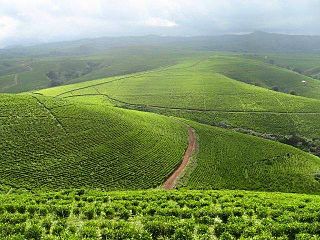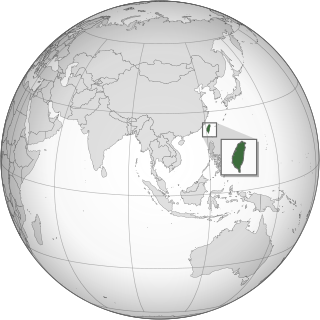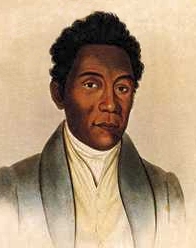Related Research Articles
Hawaiian is a Polynesian language of the Austronesian language family that takes its name from Hawaiʻi, the largest island in the tropical North Pacific archipelago where it developed. Hawaiian, along with English, is an official language of the US state of Hawaii. King Kamehameha III established the first Hawaiian-language constitution in 1839 and 1840.
The Balinese script, natively known as Aksara Bali and Hanacaraka, is an abugida used in the island of Bali, Indonesia, commonly for writing the Austronesian Balinese language, Old Javanese, and the liturgical language Sanskrit. With some modifications, the script is also used to write the Sasak language, used in the neighboring island of Lombok. The script is a descendant of the Brahmi script, and so has many similarities with the modern scripts of South and Southeast Asia. The Balinese script, along with the Javanese script, is considered the most elaborate and ornate among Brahmic scripts of Southeast Asia.

Native Hawaiians, or simply Hawaiians, are the Indigenous Polynesian people of the Hawaiian Islands. The traditional name of the Hawaiian people is Kānaka Maoli.

Maranao is an Austronesian language spoken by the Maranao people in the provinces of Lanao del Norte and Lanao del Sur in the Philippines, and in Sabah, Malaysia.

Bafut is a town located in a modern commune in Cameroon, it is also a traditional fondom. It is located in the Mezam Department, which in turn is located in the Northwest Province.

Taraba is a state in North Eastern Nigeria, named after the Taraba River which traverses the southern part of the state. Taraba's capital is Jalingo. The inhabitants are mainly the Fulani, Jukun, Chamba,Tiv, Kuteb and the Ichen who are found predominantly in the southern part of the state while Wurkum, Mumuye, and Kona tribes are predominantly located in the northern part of the state. The central region is mainly occupied by the Mambila people, Chamba,Fulani and Jibawa. There are over 40 different tribes and their languages in Taraba State.

Rukai is a Formosan language spoken by the Rukai people in Taiwan. It is a member of the Austronesian language family. The Rukai language comprises six dialects, which are Budai, Labuan, Maga, Mantauran, Tanan and Tona. The number of speakers of the six Rukai dialects is estimated to be about 10,000. Some of them are monolingual. There are varying degrees of mutual intelligibility among the Rukai dialects. Rukai is notable for its distinct grammatical voice system among the Formosan languages.
Bali may refer to any of several languages:
The Chamba people are a significant ethnic group in the north eastern Nigeria. The Chamba are located between present day Nigeria and Cameroon. The closest Chamba neighbours are the Mumuye, the Jukun and Kutep people. In Cameroon, the successors of Leko and chamba speakers are divided into several states: Bali Nyonga, Bali Kumbat, Bali-Gham, Bali-Gangsin, and Bali-Gashu. The are two ethnic groups in Ghana and Togo also called Chamba, but they are ethnically distinct. The Chamba are identified through their own language, beliefs, culture, and art.

Samuel Mānaiakalani Kamakau was a Hawaiian historian and scholar. His work appeared in local newspapers and was later compiled into books, becoming an invaluable resource on the Hawaiian people, Hawaiian culture, and Hawaiian language while they were disappearing.
Bali Nyonga is a town in the Northwest Region of the country Cameroon on the West Central borders on the continent of Africa. It is the home of the Bali Nyonga, a people of the Chamba Leko group - an entity that migrated from Chamba around 1600. Their language is known as mungaka.
The Nun languages are a group of Eastern Grassfields languages spoken by the Bamum (Mum) and related peoples of the Western High Plateau of Cameroon.

David Malo or Davida Malo (1795–1853) was a chiefly counselor, a Hawaiian intellectual, educator, politician and minister. He is remembered by subsequent generations of Hawaiian people and scholars primarily as a Native Hawaiian historian of the Kingdom of Hawaii. In 1852 he was ordained as a minister at Kēōkea, Maui.
Bali is a Local Government Area in Taraba State, Nigeria.
Chamba Leko is one of two languages spoken by the Chamba people, the other being Chamba Daka. It is a member of the Leko branch of Savanna languages, and is spoken across the northern Nigerian–Cameroonian border.
Nyong (Daganyonga), also known as Mubako and Bali-Kumbat, is a Leko language spoken in two well-separated enclaves in Cameroon and Nigeria. Cameroonian speakers consider themselves to be ethnically Chamba.

The Ibanag language is an Austronesian language spoken by up to 500,000 speakers, most particularly by the Ibanag people, in the Philippines, in the northeastern provinces of Isabela and Cagayan, especially in Tuguegarao, Solana, Abulug, Cabagan, and Ilagan and with overseas immigrants in countries located in the Middle East, United Kingdom and the United States. Most of the speakers can also speak Ilocano, the lingua franca of northern Luzon island. The name Ibanag comes from the prefix "I" which means "people of", and "bannag", meaning river. It is closely related to Gaddang, Itawis, Agta, Atta, Yogad, Isneg, and Malaweg.

Hiligaynon, also often referred to as Ilonggo, is an Austronesian regional language spoken in the Philippines by about 9.1 million people, predominantly in Western Visayas and Soccsksargen, most of whom belong to the Hiligaynon people. It is the second-most widely spoken language in the Visayas and belongs to the Bisayan languages, and is more distantly related to other Philippine languages.

Ilocano is an Austronesian language spoken in the Philippines, primarily by Ilocano people and as a lingua franca by the Igorot people. It is the third most-spoken native language in the country.
Tania M. Ka'ai, sometimes known as Tania Kaai-Oldman, is a New Zealand Education academic. She is of Ngāti Porou, Ngāi Tahu, Native Hawaiian, Cook Island Māori, and Sāmoan descent and is a full professor of Language Revitalisation at the Auckland University of Technology.
References
- ↑ Nga'ka at Ethnologue (18th ed., 2015) (subscription required)
- ↑ "The Chamba Migration and the Origin of Bali Nyonga". Archived from the original on 2009-06-29. Retrieved 2009-02-03.
- ↑ "Mungaka (Fall 2014) | Language Documentation Training Center, University of Hawaiʻi at Mānoa". ling.hawaii.edu. Retrieved 2017-09-07.